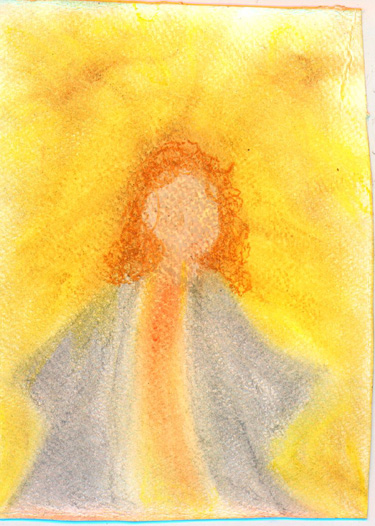The Earth/Mother Goddesses
|
| 
|
Traditionally, goddesses are viewed as mothers and creators, ensurers of the fertility of land and people alike. With the discovery of pre-Vedic sites such as Harappa, and its seals showing trees growing from the wombs of goddess figures, scholars proposed the existence of an early goddess tradition which was (partially) incorporated in the traditions of the arriving Aryans.1 Male dieties dominate their Rg Veda,2 but in it we still find goddesses such as those listed below:
|
Usas (Dawn): also "called the mother of cows and, like a cow that yields its udder for the benefit of people, so Usas bares her breast to bring light for the benefit of humankind."3
Prthivi (Earth): maternal and productive, Prthivi supports all things and is percieved as stable, fertile, and benign
Adjti: mother of Indra, kings and gods, who, as a cow, provides nourishment; also the guardian of rta, laws which delineate order from chaos
Sarasvati (River): brings fertility to Earth and is purifying; considered bountiful, nourishing and maternal
Vac (Speech): this benign and bounteous being plays the role of creator
Several, if not all, of these goddesses clearly express the importance of agriculture in Indian society. The waters of Ganga Mata (Mother Ganges), the source of all (sacred) waters everywhere, are considered to be the "sustaining immortal fluid (amrta) of mother's milk."4 Indeed, one version has it that her descent to Earth was caused by a need for fertility and nurturance to resurrect King Sagara's sons.5 Rivers facilitate birth, bringing both the waters necessary for agriculture and the skill of sacrifice.